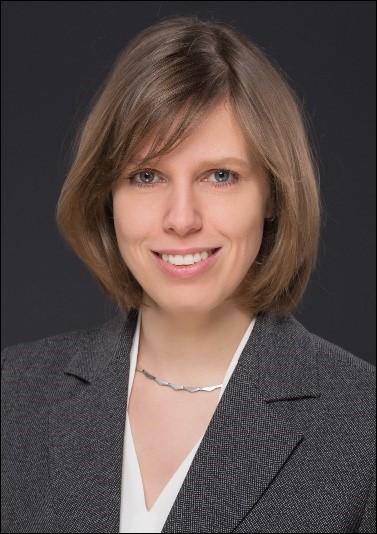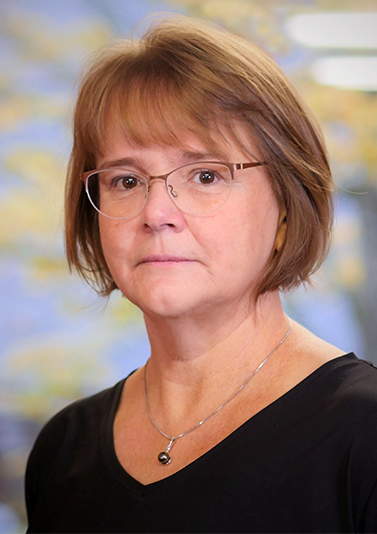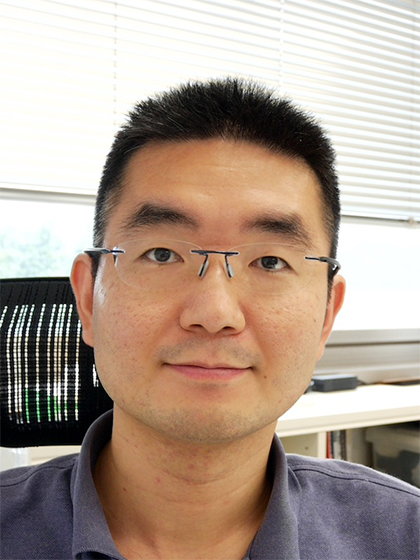About us
We are a consortium of reach labs from The University of Bologna, Italy; The University of Edinburgh, UK; The Free University of Berlin, Germany; The Complutense University of Madrid, Spain; The University of Helsinki, Finland; Jagiellonian University, Poland; KU Leuven, Belgium, Leiden University Medical Center, Netherlands; Aalto University, Finland; National Institute of Chemistry, Slovenia. The team has wide expertise to support our goals of building future biological nanomachines. These include in silico modeling, therapeutic cargo development, DNA nanotechnology, protein design, production and in cell/in vivo testing.
Our team

Jonathan Heddle
Professor, Centre for Programmable Biological Matter, Durham University
Jonathan Heddle is the leader of the Bionanoscience and Biochemistry Laboratory. He is interested with combining molecular biology, structural biology and biophysics with diverse areas of science (chemistry, mathematics, physics) with the ultimate aim of building intelligent nanomachines which will have multiple applications notably in human health.

Stephan Block
Group Leader, Institute of Chemistry and Biochemistry, Freie Universität Berlin
Our research centers on the development and application of biophysical and physicochemical methods, which allow to characterize the properties of macromolecules (polyelectrolytes and proteins) as well as of bionanoparticles (liposomes/lipid nanoparticles, viruses, bacteria). In particular, we develop methods to accurately quantify protein functionalities, such as enzymatic activity, and binding properties of complex interactions, such as multivalent interactions generated by infectious agents. Most of our methods rely on a combination of advanced microscopic approaches (such as total internal reflection fluorescence (TIRF) microscopy or single-molecule localization microscopy) with microfluidics and/or sophisticated data analysis schemes, enabling for high data throughput while keeping single-molecule/single-particle resolution.

Arnout Voet
Associate Professor at the KU Leuven Department of Chemistry
In our laboratory we focus on the usage biomolecular modelling methods to study biochemical processes with an explicit focus on the application of computational methods in computer aided drug design as well as computational protein design. In drug design are we especially interested in novel targets to identify first in class compounds. Our designer proteins are used to study evolution, engineer enzymes for green catalysis and bionanotechnology. Next to the computational experiments we also perform the validatory biophysical “wet-lab” experiments and protein crystallography in house.

Álvaro Martínez-del-Pozo
Full Professor of Biochemistry, Department of Biochemistry and Molecular Biology, Faculty of Chemistry, Complutense University at Madrid, Spain
Working towards understanding how some toxic water-soluble proteins can interact with lipid membranes. Using this information to try to build useful and environmentally sustainable biotechnological tools, such as specific insecticidal agents, plastic-degrading enzymes or therapeutic or diagnostic molecules. Dedicated teacher. Very keen on sports, practicing running, swimming, cycling, and alpine skiing.

Katherine Dunn
Senior Lecturer in School of Engineering at University of Edinburgh.
My research involves re-engineering biological molecules and using them as building blocks in new technologies. Current projects are aimed at developing new bio-inspired paradigms for net zero electricity generation and energy storage, life-saving diagnostics, and ground-breaking tools for synthetic biology.

Timo Laaksonen
Pharmaceutical Nanotechnology, University of Helsinki
Timo Laaksonen has experience on physical chemistry and pharmaceutical technology, and has applied novel biomaterials such as nanocellulose in pharmaceutical applications. Recent work has concentrated on biophotonics, in particular on the use of light-triggered reactions for drug release. He currently working in GeneCellNano (Academy of Finland Flagship project) and holds a prestigious ERC Consolidator Grant (PADRE, 2021-2026

Giampaolo Zuccheri
Department of Pharmacy and Biotechnology at the University of Bologna
We are interested in the characterization of nanosystems with microscopy technique, especially atomic force microscopy, and in the design of nanostructures that can interact with live cells. We also exploit nanostructures and self-assembly towards the development of biosensors.

Yusuke Azuma
Assistant Professor, Małopolska Centre of Biotechnology, Jagiellonian University
Yusuke is leading a start-up research group that is developing protein-cage-based biotechnology. The major direction of his research team is to build artificial organelle-like compartments, through redesign and evolving naturally-existing protein cages, to perform otherwise incompatible chemical processes in living cells. Such technologies potentially provide useful tools for bioproduction of valuable molecules as well as simpler models to understand more complex cellular compartmentalization systems.

Thomas Sharp
Bristol University
My lab focusses on developing synthetic biological applications to understand and exploit the human innate immune system. We use DNA nanotechnology to build and control antigen nanopatterns to determine structure-function relationships required for immune system activation. We also use cryoEM to perform structural biology of immune system complexes, which we also combine with super-resolution light microscopy performed on cryogenic samples to achieve high-accuracy localization of tagged proteins within samples prepared for cryoEM. This will allow us to perform structural biology on individual proteins within cells.

Mauri Kostiainen
Professor, Department of Bioproducts and Biosystems, Aalto University
Mauri Kostiainen leads the biohybrid materials research group at Aalto University school of chemical engineering. Our research interests focus on the integration of biological and synthetic building blocks in a designed manner to create biohybrid materials. Of special interest are DNA nanostructures, virus particles and other protein cages that can be repurposed for materials science applications.

Ajasja Ljubetič
Research Assistant Professor, National Institute of Chemistry, Slovenia
We focus on the design and study of de novo designed dynamic protein assemblies, with a particular emphasis on coiled coil structures. Coiled coils are formed by two or more alpha helices that are wound around each other in a specific way, and they play important roles in many biological processes.
We use the Rosetta software to rigidly fuse coiled coils to de novo designed proteins. We also employ state of the art deep learning methods, such as Alphafold2, RFDiffusion and Protein MPNN. This allows us to get the best of both worlds: the binding versatility and orthogonality of coiled coils and the stability and shape variability of designed proteins. By exploring the potential of de novo designed proteins, we hope to make important contributions to the field of biotechnology.
Twitter: https://twitter.com/AjasjaLjubetic

Alena Khmelinskaia
Professor Dr., Department of Chemistry, Ludwig-Maximilians-Universität München
The group of Protein Design and Self-Assembly focuses on dissecting the physical principles of protein self-assembly. While conceptually simple, the phenomenon of self-assembly entails a fine equilibrium of a number of physical properties, which determine the dynamics and structure of the assembly architecture. We combine computational de novo protein design with protein production and in vitro biophysical methods to systematically investigate the interplay between different types of interactions in the protein assembly process. Our goal is to create dynamic and responsive protein-based materials, by exploring protein structural flexibility and by coupling assembly to other biological processes.

Ivan Campeotto
Assistant Professor in Microbial Biotechnology, Faculty of Science, Nottingham University
My group currently focuses on structure-based drug design and structure-guided vaccine development in the fields of Neglected Tropical Diseases (NTDs) and of emerging viruses. My collaborators include parasitologists, virologists and immunologists within the University of Nottingham and from London School of Hygiene and Tropical Medicine, University of Oxford, University of Copenhagen, University of Buenos Aires and Cornell University.
One of main research streams of Dr Campeotto’s team lies in the design and production of immunogens from human and animal pathogens, for the generation of monoclonal antibodies, which we test for diagnostic and therapeutic applications. Another stream lies on the determination of antigen-antibody complexes, which are used to guide the design and development of vaccine prototypes via epitopes conjugation to engineered Virus-Like-Particles (VLPs), upon computational epitope crafting.

Takafumi Ueno
Professor Dr., School of Life Science, Tokyo Institute of Technology
My research group is interested in the engineering of protein assemblies. In addition to research on the functionalization of protein cages and protein needles, we have recently been focusing on the engineering of protein crystals. My particular focus is on spontaneous protein crystallization in living cells. By adapting this phenomenon to various proteins, we are developing solid biocatalysts and porous biomaterials and applying to high-throughput crystal structure analysis.
Webpage: Ueno Lab. – Tokyo Institute of Technology (titech.ac.jp)

Franziska Thomas
Professor Dr., Faculty of Chemistry and Earth Sciences, Heidelberg University
We are a peptide synthesis and design group. Our research interests include the bottom-up design of miniproteins, in particular minireceptors and mini-enzymes, all based on β-sheet peptide scaffolds. We are also interested in the use of peptides and miniproteins for the biofunctionalisation of materials or the de novo design of peptide materials. A third research interest is the development of late-stage peptide functionalisation methods for the straightforward generation of peptide libraries for the identification of therapeutic peptides, e.g. peptide vaccines against glioblastoma.

Beatrix Süß
Professor Dr., Synthetic RNA Biology, The Technical University of Darmstadt
A main focus of the Süß lab is the development of engineered riboswitches that can be applied as genetic regulatory devices for synthetic biology. We established a pipeline that integrates the in vitro selection process (SELEX), next generation sequencing and in vivo screening for rapid identification of aptamers that have the potential to be engineered into riboswitches. In a combination of genetic, biochemical and structural studies we address the question how regulation of riboswitching aptamers works at the molecular level and explore applications to demonstrate the versatility and robustness of engineered riboswitches in bacteria, archaea and eukaryotes.
Webpage: Süß Lab

Shogo Hamada
Assistant Professor, Department of Computer Science & Department of Systems and Control Engineering
Institute of Science Tokyo
Our research group develops biomolecular systems for robotics, healthcare, and materials science, including slime-type molecular robots powered by artificial metabolism.
We specialize in designing and engineering dynamic DNA materials, from self-growing DNA hydrogels to DNA crystals, integrating these key technologies with microfluidics and computational design to create various classes of life-like systems at multiple scales for real-world applications.
Dr. Hamada also serves as Chair of the Biomolecular Design Institute at CBI Research Institute, Japan, leading initiatives to support the biomolecular design and molecular robotics community, including the International Biomolecular Design Competition (BIOMOD) and a shared experimental facility network.
Webpage: Hamada Lab

Jessica Cross
Lecturer in Engineering Biology
University of Bristol
Our lab works at the interface of chemistry, biology and engineering to design proteins to manipulate cell architecture, seeking to understand intracellular transport and design new protein machines for engineering biology. Current projects include engineering minimal and cargo-activated motor proteins and using protein design to uncover how molecular “hinges” regulate natural motor activity and cargo selection. Using this knowledge, we aim to develop synthetic tools that can hijack and rewire transport pathways inside cells, with possible applications in diseases where transport is impaired e.g. neurodegeneration.

Roger Rubio Sanchez
BBSRC Discovery Research Fellow at the Department of Chemical Engineering & Biotechnology, Cambridge
My research exploits the tools of bionanotechnology, ranging from self-assembly and membrane biophysics to DNA nanotechnology, to construct from the bottom-up biomimetic objects, often called synthetic cells, with life-like features. These serve as powerful model platforms to quantitatively deepen our understanding on biological phenomena in isolation from physiological complexity, and they carry immense potential as next-generation biotechnologies for healthcare and biomedicine.
Webpage: CEB

